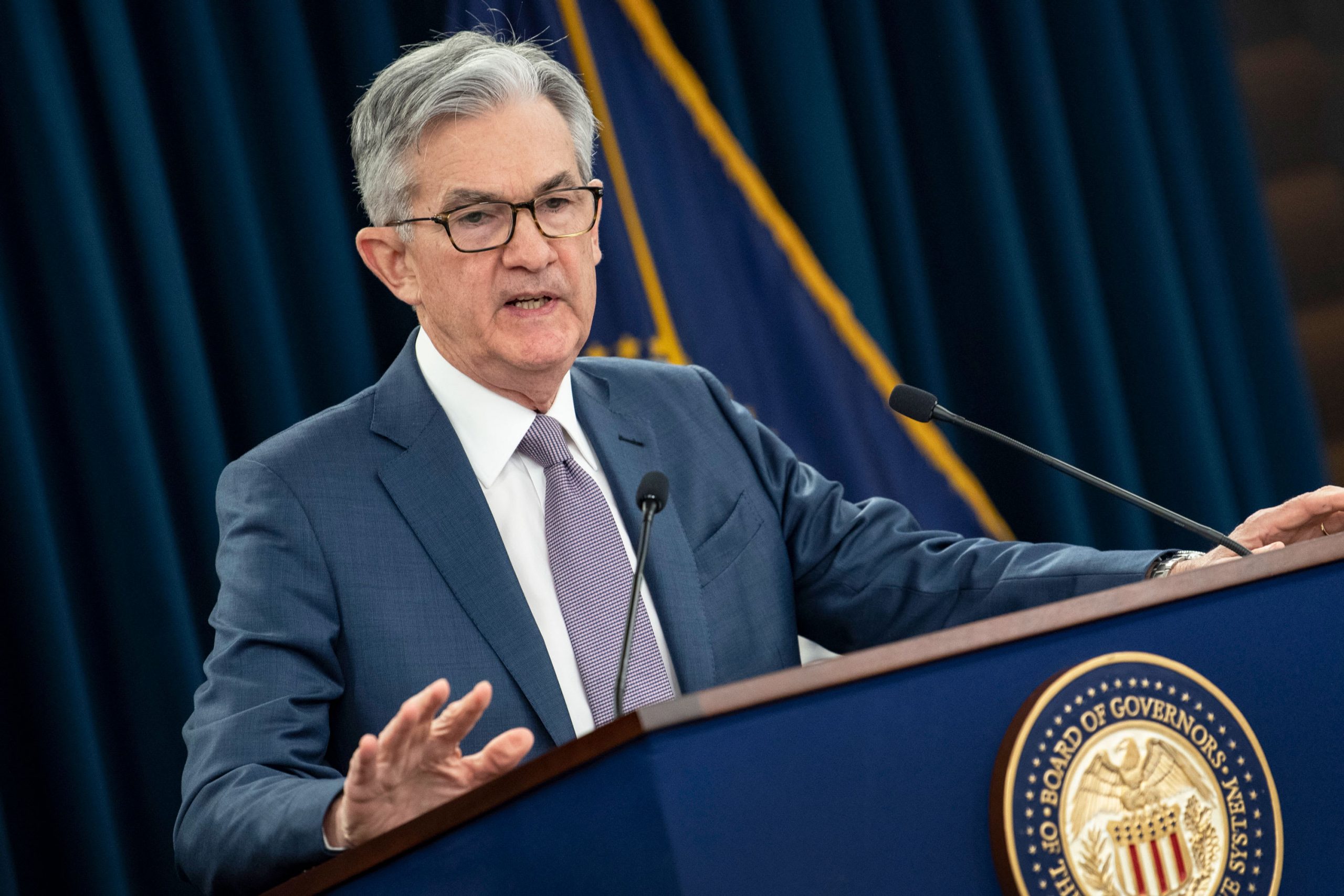
The Federal Reserve held short-term borrowing rates near zero in a decision Thursday that characterized the economy as growing but not near where it was before the coronavirus pandemic hit.
As markets widely expected, the Fed kept its benchmark interest rate anchored in a range between 0%-0.25%, where it has been since an emergency cut seven months ago in the early days of the coronavirus pandemic.
Chairman Jerome Powell noted, however, that he thinks the Fed still has plenty it can do to help the recovery.
“Is monetary policy out of power or out of ammunition? The answer to that is no, I don’t think that,” Powell said during his post-meeting news conference. “I think that we’re strongly committed to using these powerful tools that we have to support the economy during this difficult time for as long as needed and no one should have any doubt about that.”
There were few language changes in the post-meeting statement from the Federal Open Market Committee, though the panel did note that the economy continues to struggle.
“Economic activity and employment have continued to recover but remain well below their levels at the beginning of the year,” the statement said.
The language is a slight downgrade from the September statement that noted economic activity had “picked up in recent months.”
Markets reacted little to the Fed news, with stocks continuing their rally while the dollar was lower.
The Fed’s decision to hold steady comes amid concerns over the direction of the economy as Covid-19 cases accelerate and public officials contemplate restrictions on activities that could hamper growth. As it has done multiple times before, the Fed emphasized that the growth trajectory is largely dependent on the path of the coronavirus.
The Fed has sought to use accommodative policy to stimulate growth, though officials have warned in recent months that more needs to be done on the fiscal side.
“I don’t think it should be forgotten how significant everything they’ve done to this point has been,” said Tom Garretson, senior portfolio strategist at RBC Wealth Management. “There are still some tweaks.”
The committee also adjusted its view on financial conditions, saying Thursday they “remain accommodative,” as opposed to September’s assessment that conditions “have improved.”
In the third quarter, U.S. gross domestic product posted its fastest increase ever, rising at a 33.1% annualized pace after contracting 31.4% in the previous period. The economy has recovered 11.4 million of the 22 million jobs lost in March and April, but payroll growth has slowed in recent months and is expected to decelerate to 530,000 in October.
However, Congress and the White House remained locked in negotiations to provide more fiscal help. The election results, if they hold as many market participants expect, likely mean spending on the low side of what has been bandied about through various proposals.
The Fed’s decision was unanimous at this meeting, though that wasn’t the case in September, when two members objected to a new approach to inflation that would see the FOMC hold off on rate hikes until inflation was comfortably above the 2% target.
The statement made no changes to the new approach to “flexible average inflation targeting,” an effort by the Fed to reach a mandate it has fallen short of for most of the past dozen years. A key element of the new approach is a pledge not to hike rates even if unemployment falls sharply, which in the past had been taken as a key sign that inflation would be rising.
Previous Feds has used preemptive hikes to stave off price pressures, but that won’t happen under the new regime.


 Signal2forex.com - Best Forex robots and signals
Signal2forex.com - Best Forex robots and signals




